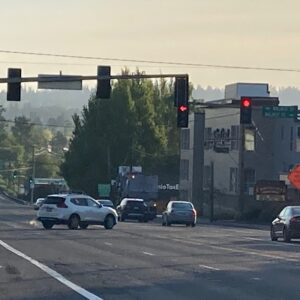From the Oregon Department of Transportation:
Exciting news! On July 14, the Oregon Transportation Commission approved $4 million in state Transportation Operating Funds for the Community Paths Program 2022 solicitation. There is also $3 million in federal Safe Routes to School funding for community paths projects that address a transportation need of local students.
That’s $7 million in additional funding for the 2022 solicitation!
Pre-applications will be accepted starting August 1. Here is what you need to know about this round of funding:
- $30 million is available in federal funding for construction or preliminary planning (Project Refinement) for projects between $500,000 and $6 million. Federal-funded grants will require a 10.27% match.
- $3 million is available in federal funding for projects within one mile of a school (K-12) that have a letter from the school detailing the need and how the project addresses that need. These are also for projects between $500,000 and $6 million, and they also require a 10.27% match.
- $4 million is available in State Transportation Operating Funds for smaller construction projects ($300,000 – $1 million). State-funded grants require a 30% match.
Oregon Community Paths, or OCP, is a competitive statewide transportation program that supports investments in multiuse paths that are not part of a roadway. Examples of eligible projects may be routes or segments that pass through a park, along a greenway, or follow abandoned rail corridors to connect community centers, services, housing, employment, schools, and recreation. Some on-road projects, such as roadway crossings for existing paths, are also eligible. OCP projects must serve a transportation purpose (not recreational) and must be open for public use. This program funds two types of community paths:
- Critical Links – walking and biking connections to schools, downtowns, shopping, employment, and other essential destinations.
- Regional Paths – connecting communities no more than 15 miles apart, or traversing one community with a path 10 miles long or greater; examples include southern Oregon’s Bear Creek Greenway or Portland’s Springwater Corridor.
Key dates to remember
- August 1 to September 15 – Pre-Applications accepted.
- November 1 to January 31, 2023 – Applications accepted.
- May 2023 – Oregon Bicycle Pedestrian Advisory Committee makes recommendations.
- July 2023 – Oregon Transportation Commission approves projects.
- October 2023 – Projects begin.
For more information, please sign up for our email list, or contact Alan Thompson, PATHS Program manager, 971-375-3903 or Alan.L.Thompson@odot.oregon.gov






Thanks for reading.
BikePortland has served this community with independent community journalism since 2005. We rely on subscriptions from readers like you to survive. Your financial support is vital in keeping this valuable resource alive and well.
Please subscribe today to strengthen and expand our work.
I guess this is how we get the hundreds of disconnected paths everywhere: ODOT takes a scattershot approach to approving path construction, wherever one can be shoehorned in. Wouldn’t it be better to take a more strategic, targeted approach – like figuring out where people need to go and planning paths to get them there??
It would be amazing if ODOT could maintain some of their more popular paths; like, say the 205 path. It’s a JOKE next to gateway transit center. That spot is a huge hub & connection between bikes and transit and yet the 205 MUP is the default smoking area, covered in broken glass, trash and feces, and lined by overgrown shrubs. Don’t ride too far in either direction or you’ll encounter all of the above and more under an overpass. I’m constantly amazed at their inability to maintain even just that stretch from Glisan to the transit center, let alone a whole network.